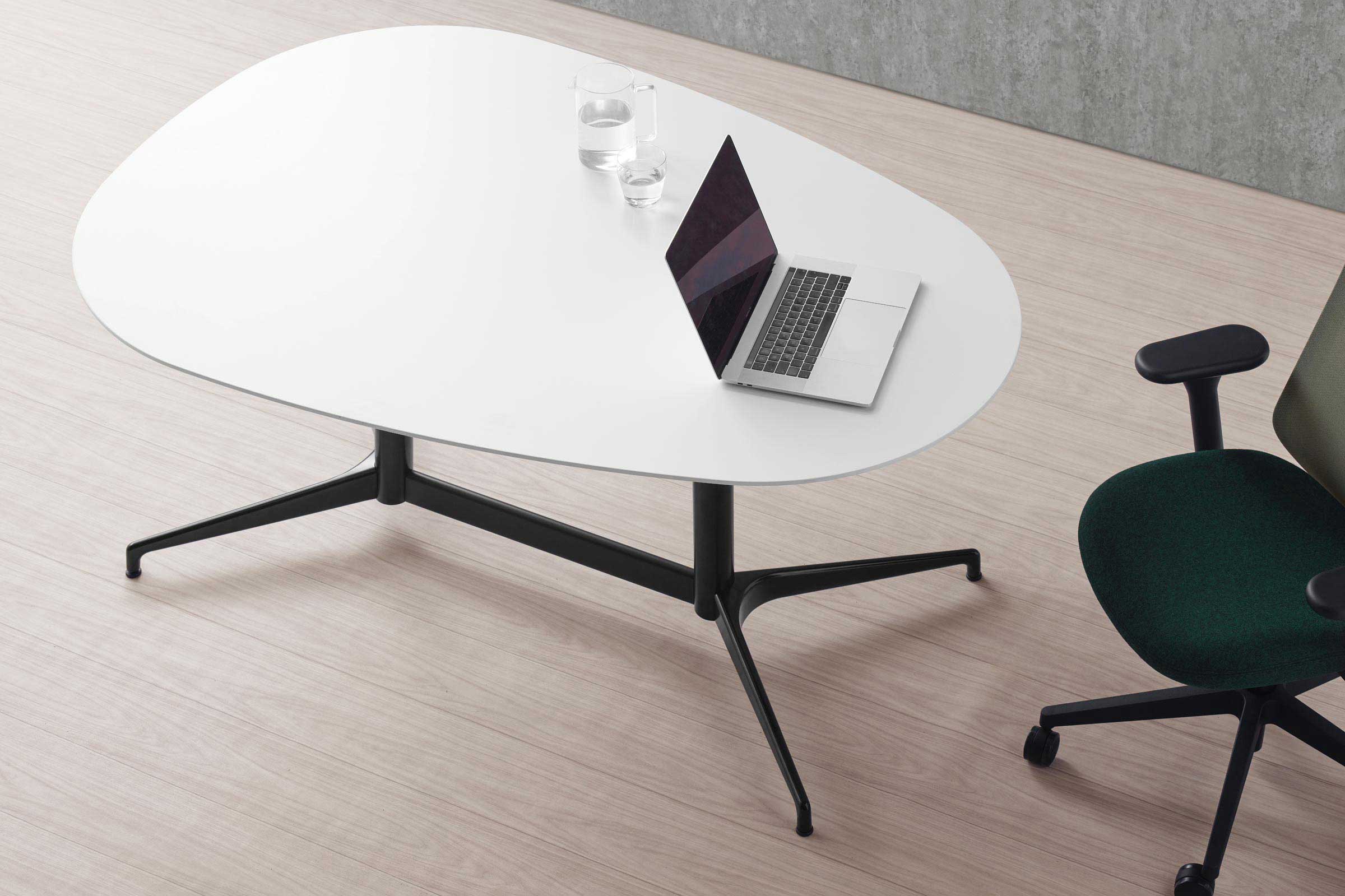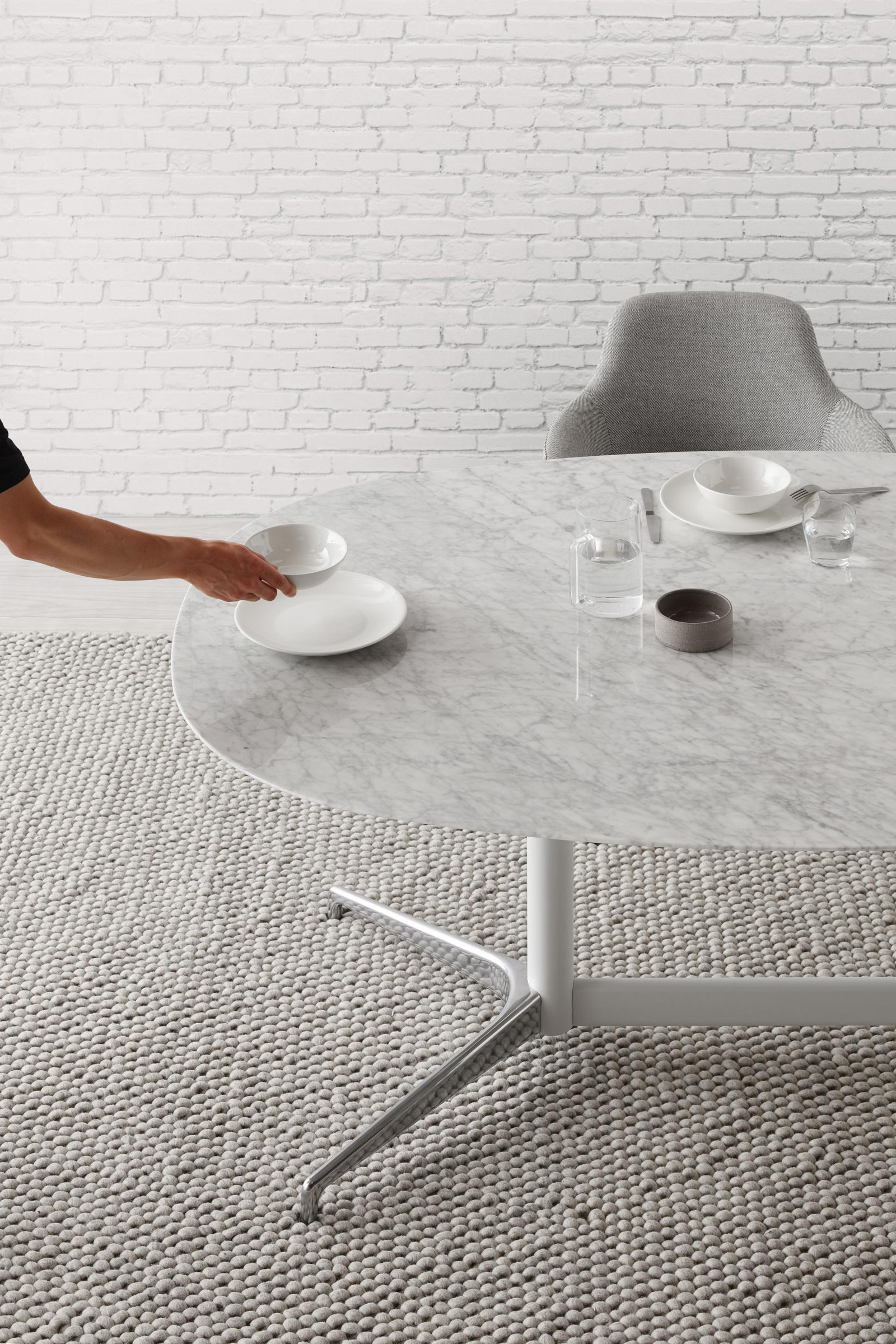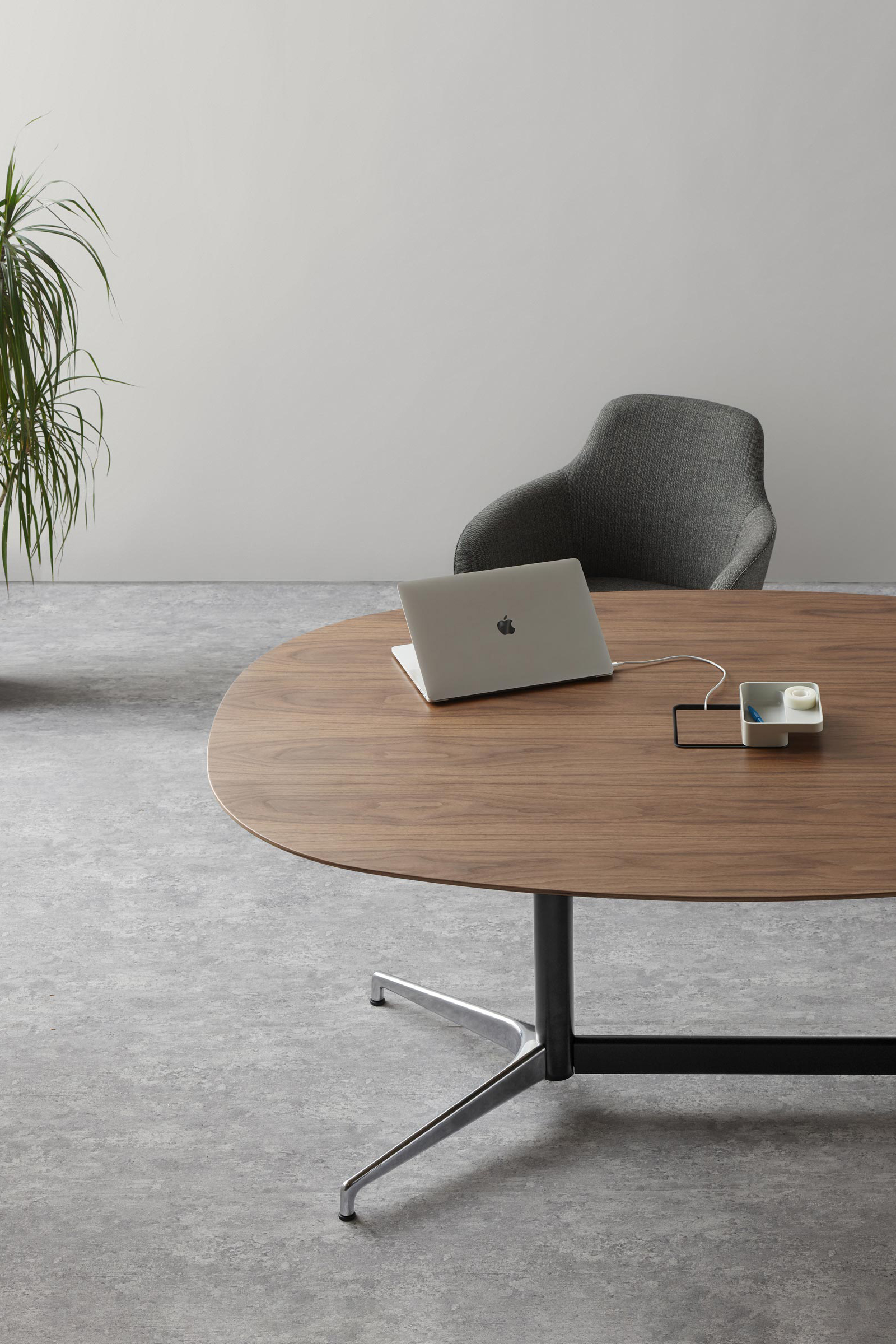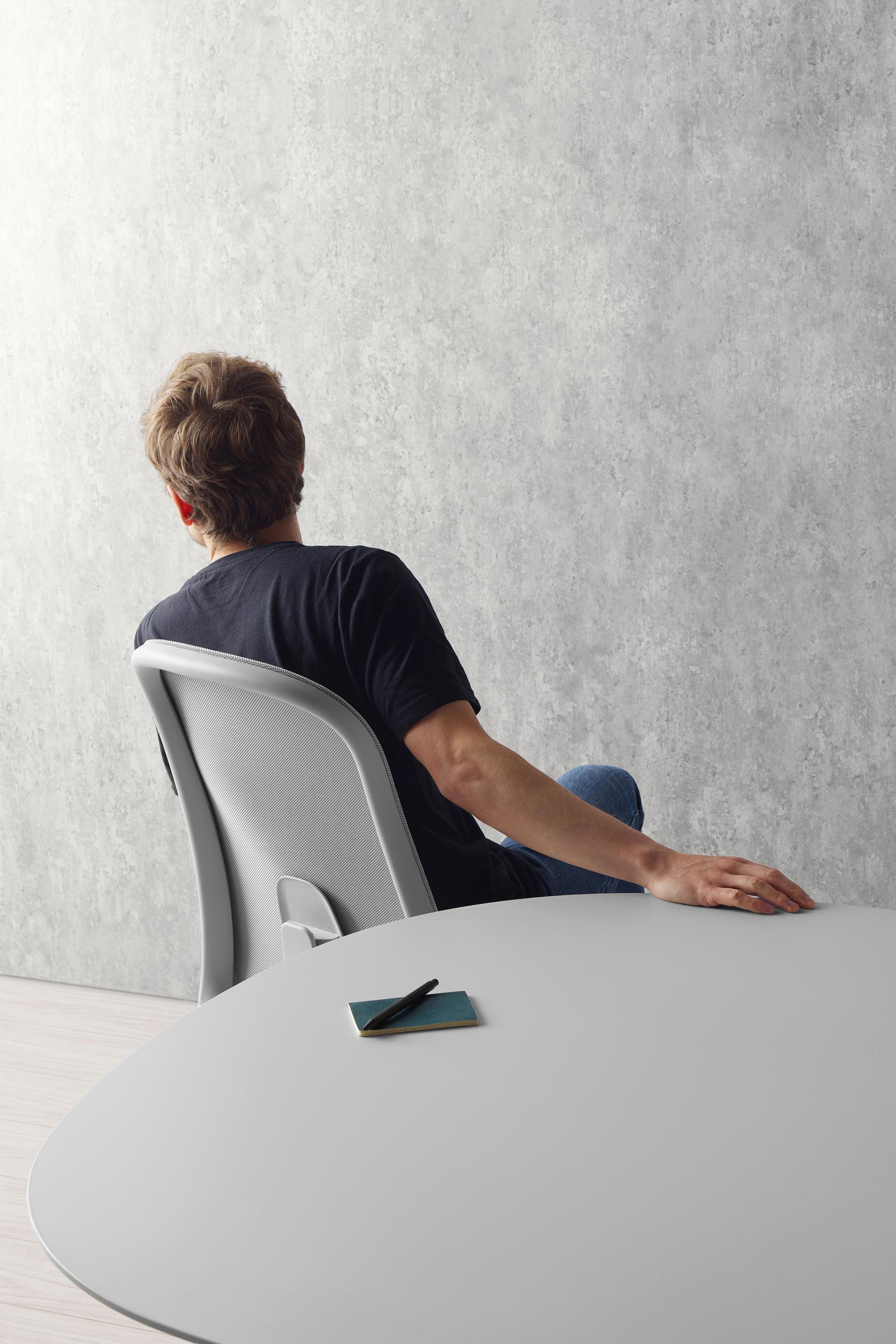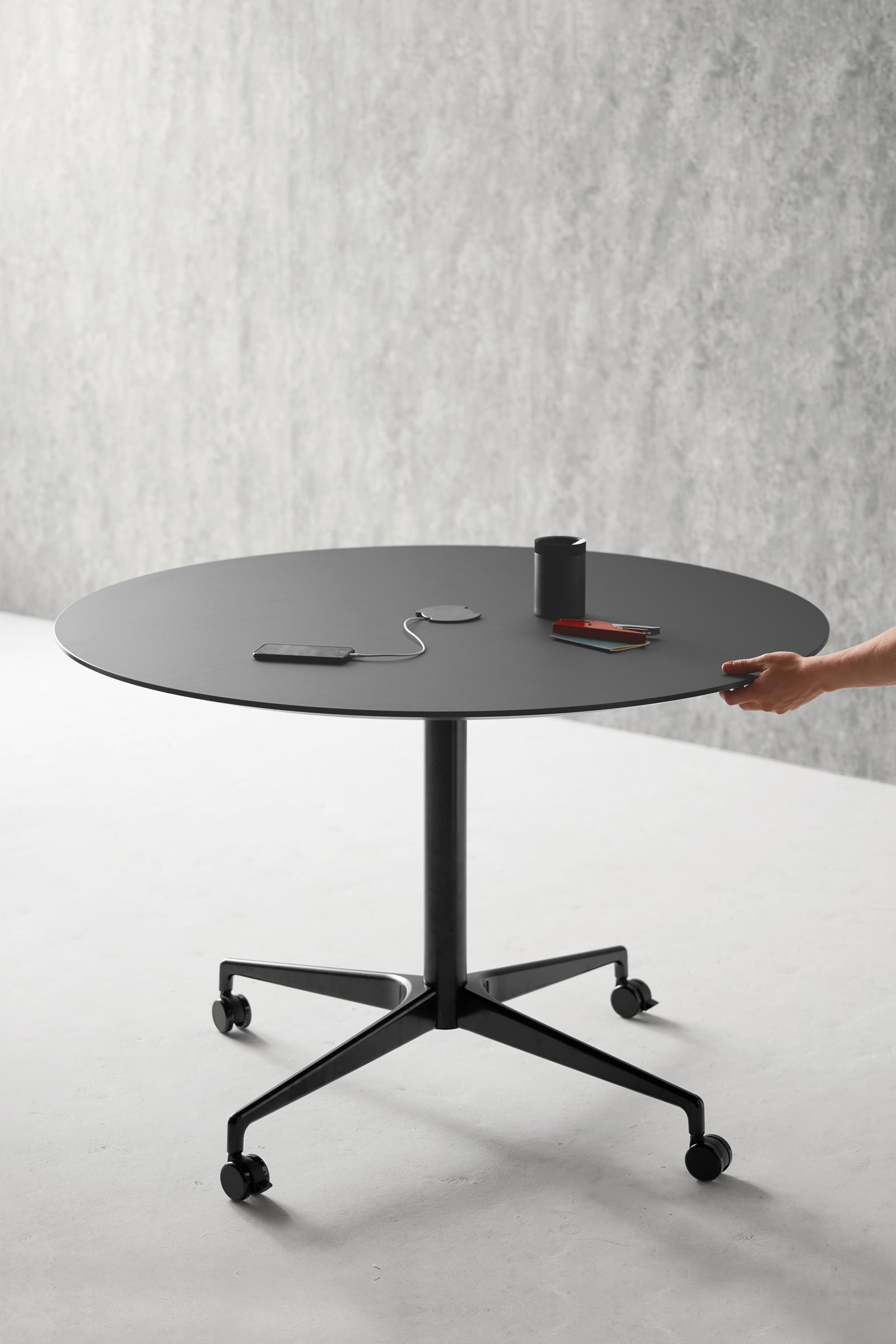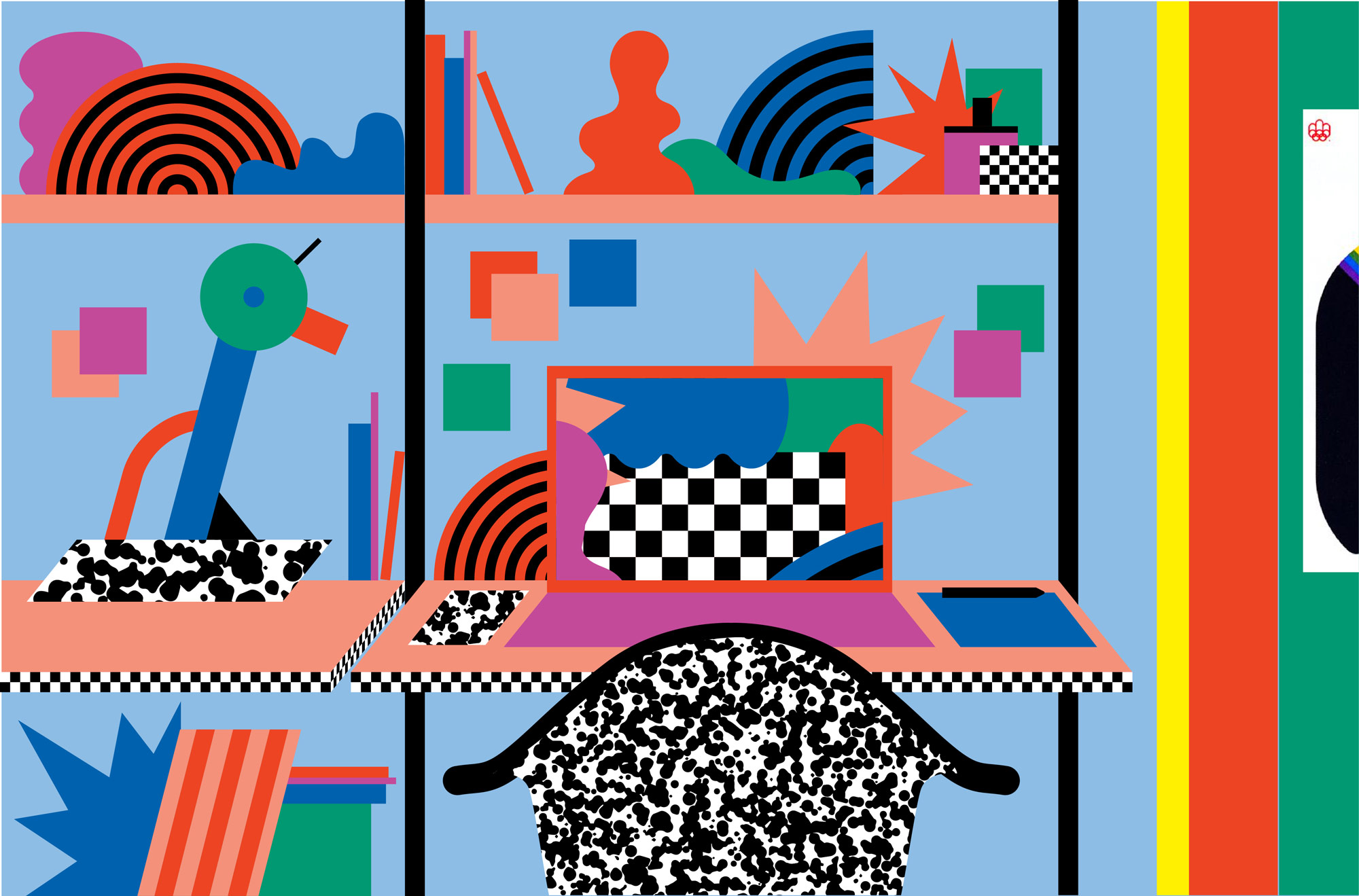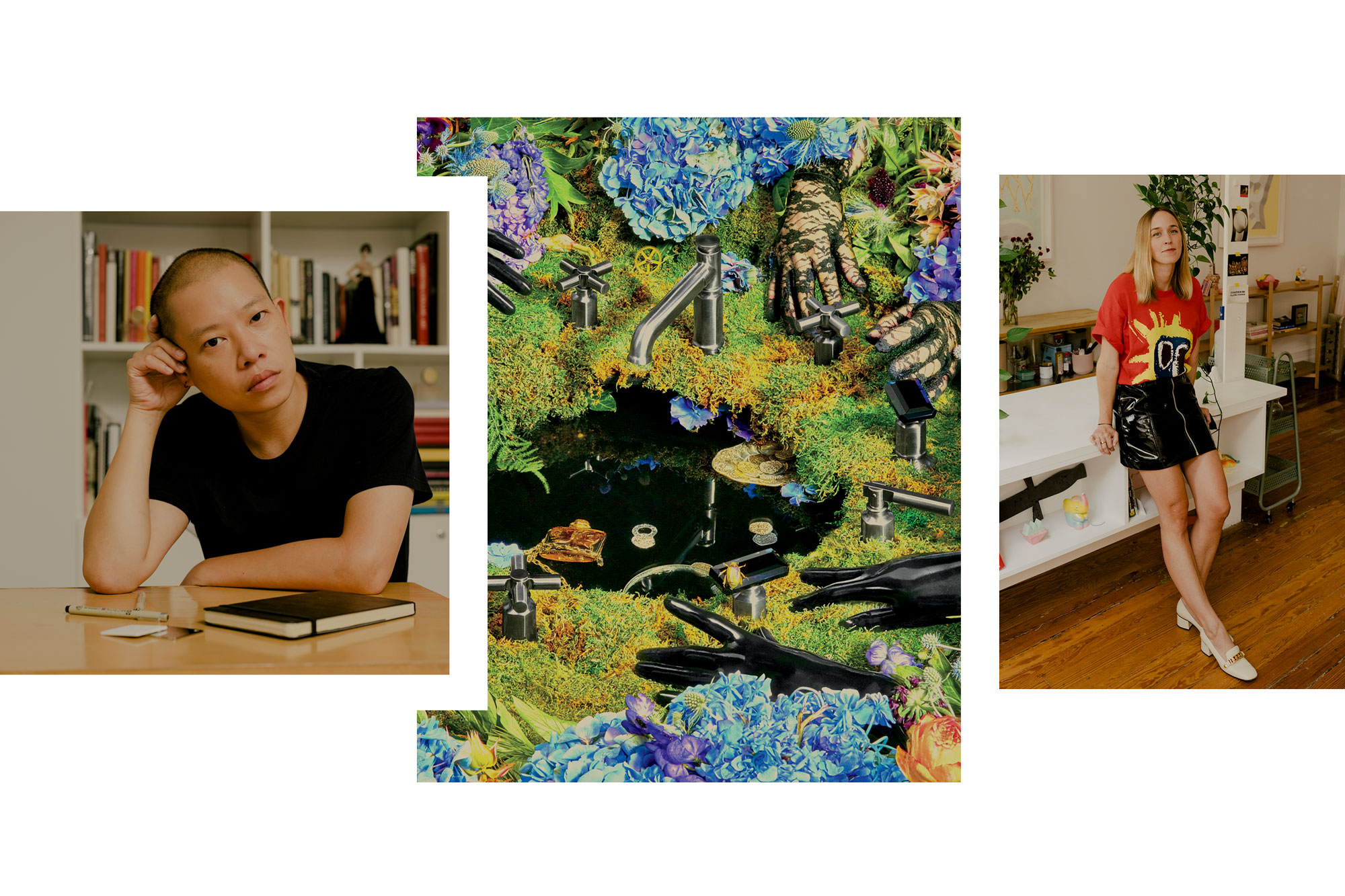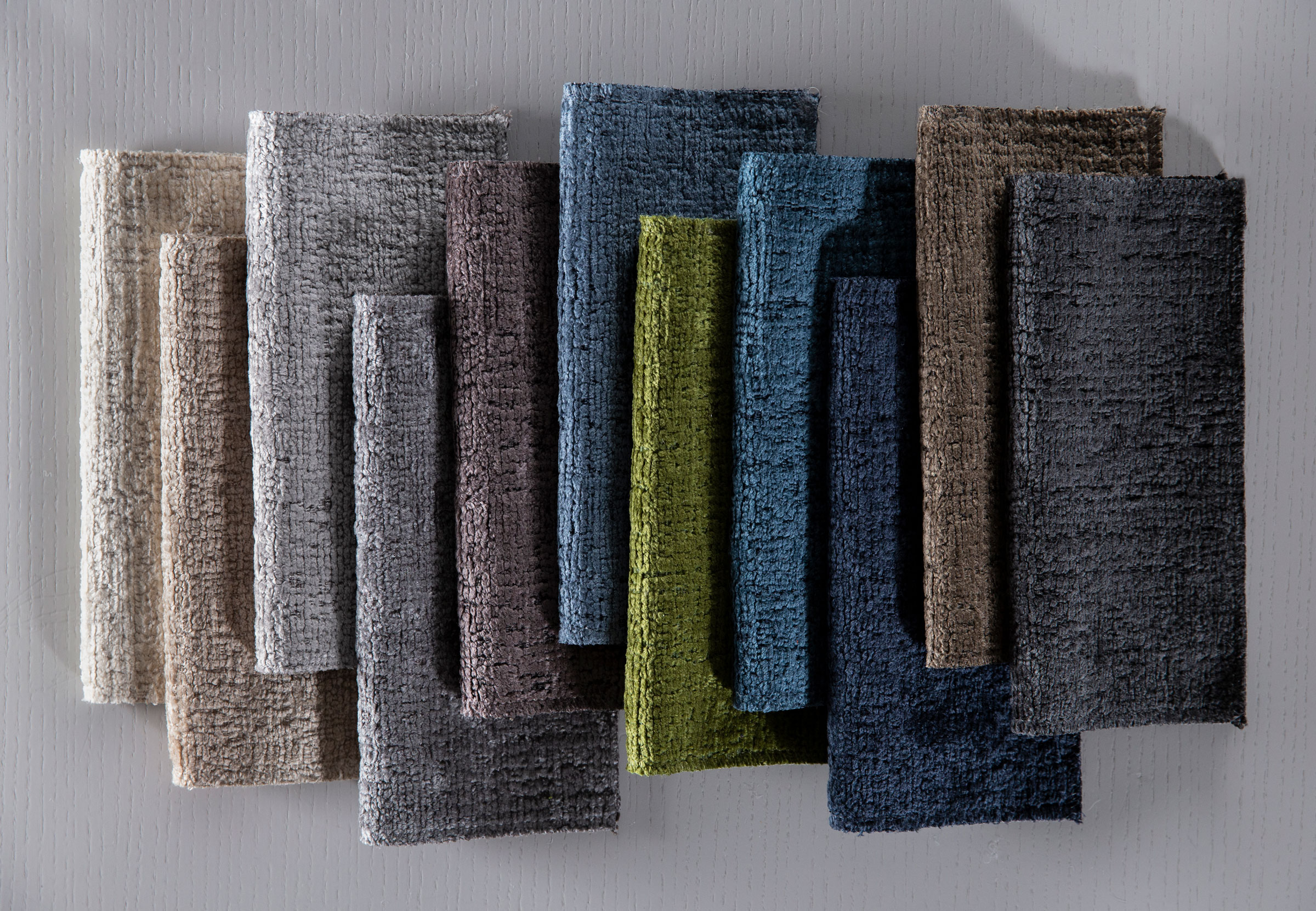Seven years ago, when award-winning designers Kim Colin and Sam Hecht of Industrial Facility were designing Locale, a collaborative office furniture system for Herman Miller, they had another idea: tables. “We weren’t asked for tables, but out of that work we were doing, we thought it would be great to have them as part of the environment that we were creating,” Kim says.
At the time, Herman Miller wasn’t focused on tables, so the idea languished. Yet Kim and Sam still thought the concept valid, that it resonated, and nearly a decade later, Herman Miller did, too. “Eventually Herman Miller approached us when they were focused on tables, wanting to look at our idea again,” Kim says. “Timing is everything, as they say, and we were just a little bit early in the first instance.”
And so Civic Tables was finally born. The comprehensive table collection includes designs for a variety of spaces and settings—work, home, play—each with choices in shape, color, material, and finish “so that when you look at a table for dining, for example, you don’t feel like it’s a conference table that has been repurposed,” Kim says.
The type of smart design choices and processes that lead the team to Civic Tables have long been part of Kim’s career. We talked to her about her tips for designing smarter and performing at your best.
- Kim Colin and Sam Hecht designed the Civic Tables collection’s elegant base to function in any type of environment—be it at home or work.
- Each Civic tabletop has curved edges or a fluid shape, a design choice that was meant to encourage people to gather around. There isn’t a single harsh angle in the collection.
Start talking.
The ongoing nature of conversations in the studio about topics that may or may not attach themselves to projects—we really think that that somehow gets into the work. Everyone in our studio is from a different country, a different background, so we have very different observations on daily life and mundane things. As we have these organic conversations, ideas become more articulate and materialize. Without that conversation, the projects themselves wouldn’t be as rich.
Redefine what it means to be productive.
That means appreciating what you’re doing as part of the process, and trusting that it’s part of the process without seeing an immediate output or uptake of your idea. I don’t think good ideas happen at scheduled times necessarily. Take the pressure of matching your expectation to what being productive means off of yourself.
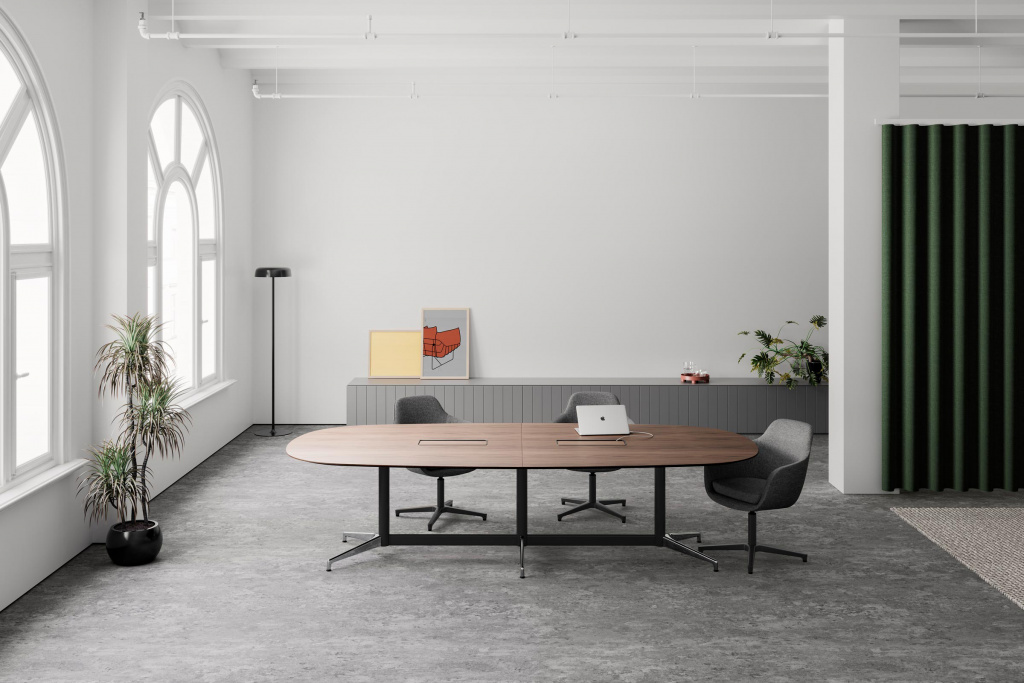
“Every project has its own constraints and starting point, but Civic isn’t like other projects in that way,” Kim Colin says. “The intelligence of the project was an outgrowth of previous creative work.”
Let go of the idea of perfection.
What if you took off the constraint that it has to be so good, that first thing that you do? Design is a lot of never having done “it” before. Sometimes you have to accept that the first thing is going to be rubbish. Wouldn’t it be great to make that rubbish at the beginning of the process, instead of at the end? Remove your idea of what perfection is before you ever make anything with your hands. Take away that judgment.
Cultivate a sense of active curiosity.
Not necessarily observation, like writing things down. I just mean as you live, letting your eye catch on things, both the good and bad. The well-designed, the perfectly-placed, the brilliant color, the spatially interesting, yes—but also, it could be something where you’re like, “Wow, that’s bad. Why is that so bad?” Have curiosity about why things are the way they are, not necessarily how to improve them. Then, when it comes to a project, you’ll have this encyclopedia inside your head that can help inform your process.
- “For me, if you’re making the project clearer and clearer as you go forward, then you’re making headway,” Kim Colin says.
- Civic Tables come in “tremendous variety,” as Kim Colin says, but were designed specifically to make it easier for other designers to customize.
Take a position with your work.
There are people who can make 50 different ideas, but the bad thing about that is that they have no position. They can’t judge which one is better and why. Design is a considered act. You’re taking resources to make things, and you’re distributing all over the world potentially. These should be well-thought out projects. What it means to take a position on a project is to understand from the beginning what the line of thinking is, and not have that be a nondescript or unclear goal.
For instance, even with the Civic Tables, we want them to be a lot of things, but we also know that there are certain things they are not going to be, and that’s on purpose. If you get lost as you’re working, you come back to those foundational principles that you established in the beginning.
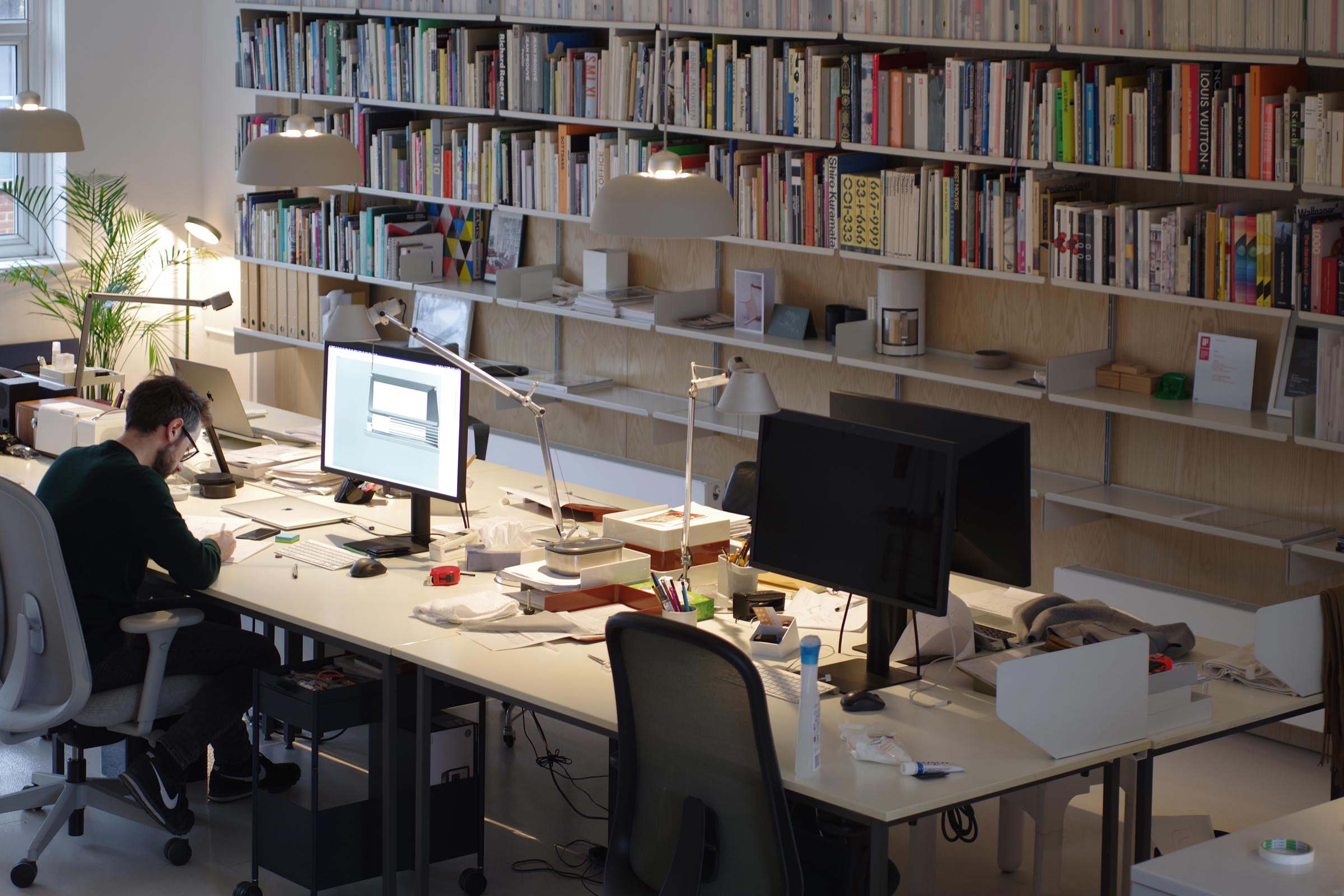
The Industrial Facility studio in London.
Make your intent clear.
With Civic Tables, what we saw from our initial proposal to when we were actually designing it was that work and home started to blend. And as these things started to blur, the tables had more reason to have more capability. The design started to get richer, and once we put all the functionality in it, we had to start to simplify that visually. The way we did that was by giving a really rich choice of materials and finishes that had never really been accomplished before in a table program—but making those choices obvious and clear. If you have too many parts that have too many possibilities, that’s just too complex for anyone to specify. It’s all about balancing options and trying to find a visual elegance that works with all types of specifications.
Overdeliver.
I mean that in the best way. Overdeliver in the thinking. Companies usually put some thought to what they’re asking for, and you have something to add to that. You’re not just there to answer what they need. What can really make a difference in a project is when you add to the richness of what they’ve proposed, and then they see that in the work, because you’ve followed through.
Photos Courtesy of Industrial Facility
